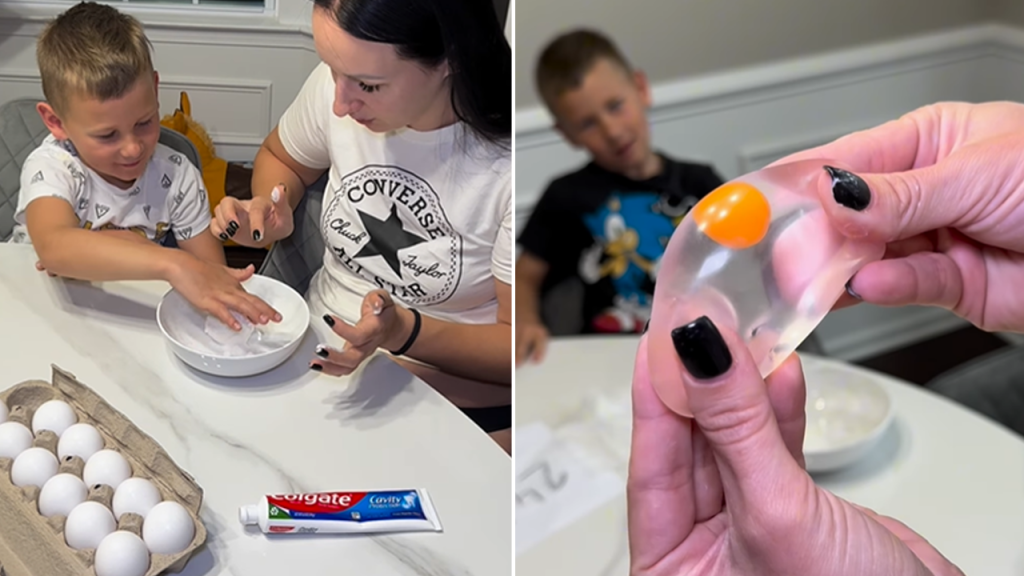The viral egg “experiment” that has been circulating on social media has led to a debate over its legitimacy. Yana Kuzmich, a digital creator, shared a video of herself and her son attempting the trick using an uncooked egg, toothpaste, and aluminum foil. The video gained over 30 million views and showed the egg appearing to turn into jelly after being left for 24 hours. However, experts have weighed in, stating that the combination of toothpaste and an egg would not produce any reaction due to both being bases.
Health science educators have explained that the toothpaste and egg are both bases, which would not react when combined. Instead, they suggest an alternative experiment where a raw egg is dipped in vinegar to break down the calcium carbonate eggshell, resulting in a rubbery translucent egg. This method has been successfully demonstrated at the Children’s Museum in Houston, Texas, and The Children’s Museum of Indianapolis in Indiana. Experts have clarified that toothpaste contains calcium carbonate, which is an ingredient that would not react with the eggshell.
Despite the scientific explanation provided by experts, social media users have been divided over the authenticity of the viral egg experiment. Some have attempted the trick themselves, only to discover that it is indeed fake, while others have fallen for the prank. One TikTok user not only debunked the trick but also revealed where rubber eggs can be purchased online. Whether users believe the experiment to be genuine or not, the video has sparked a mix of reactions, with some expressing trust issues and others appreciating the creativity behind the idea.
Yana Kuzmich, the creator behind the viral video, has admitted that the experiment was a joke. She explained that she came across the trick online and decided to try it with her son, who was pleasantly surprised by the results. While some social media users have been disappointed to learn that the video was not real, others have commended the creativity and entertainment value of the content. Despite the playful nature of the video, it has sparked discussions around the spreading of misinformation and the importance of fact-checking viral trends before attempting them.
The viral egg experiment has highlighted the power of social media in spreading content rapidly and engaging audiences worldwide. While the video may have been intended as a light-hearted joke, it has prompted conversations around scientific literacy and critical thinking. As more people attempt to replicate viral trends, it is essential to be mindful of the accuracy of information being shared online. Educators and experts have emphasized the importance of understanding the principles behind experiments and verifying the credibility of viral content before participating in the trend. Ultimately, the viral egg “experiment” serves as a reminder to approach online challenges with a healthy dose of skepticism and curiosity.


